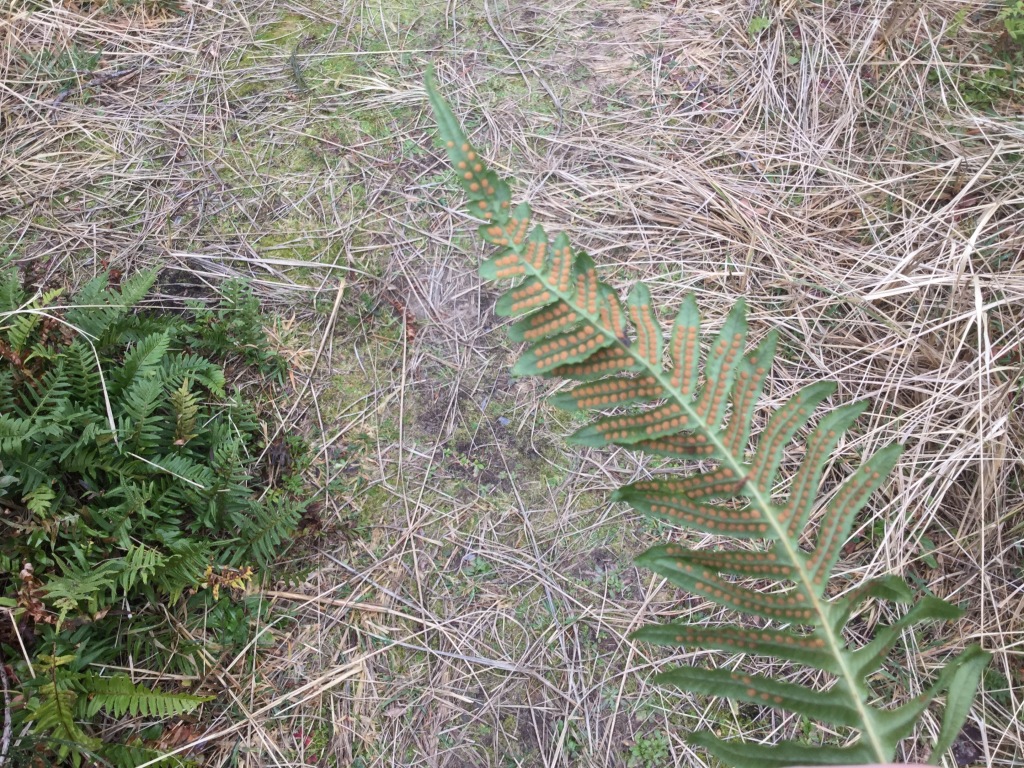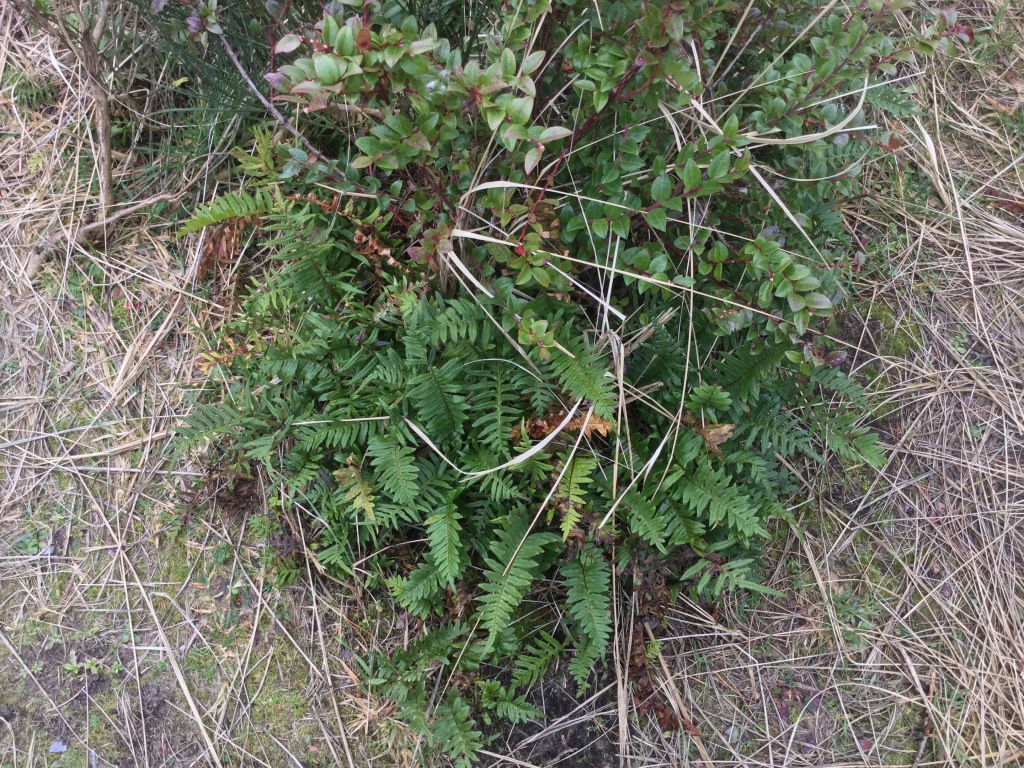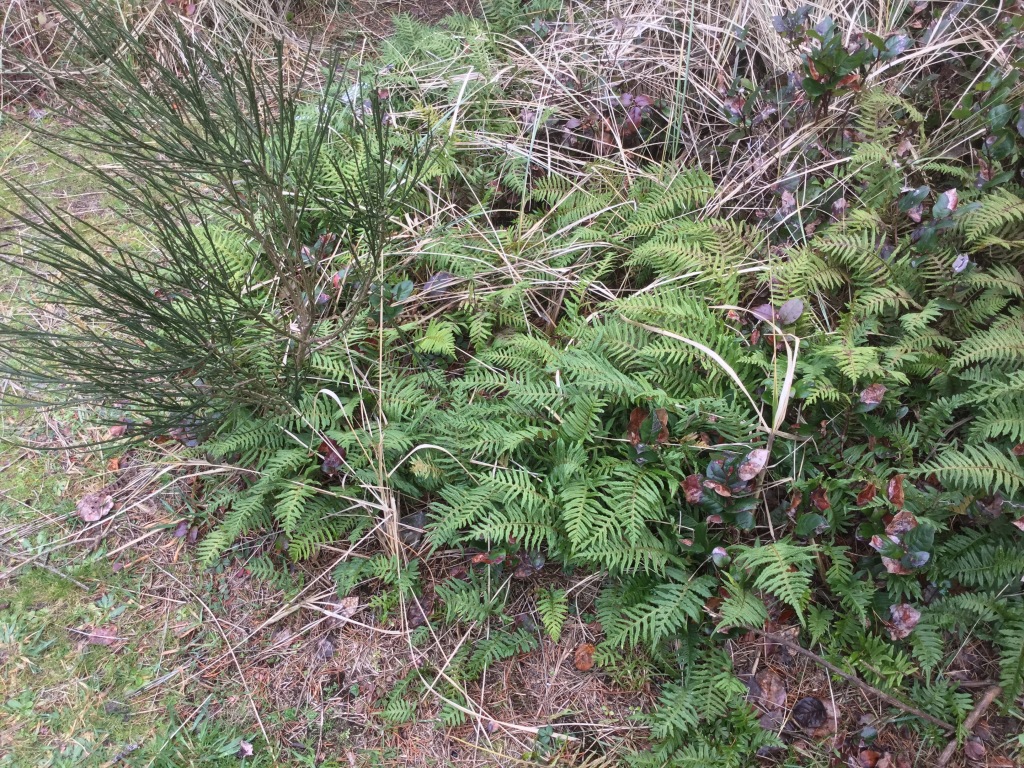Tucked away in a funny part of the dunes where salal, surf pines, and scotch broom have staked a hold — in an otherwise grassy dune — were a couple of patches of licorice fern. Long ago, I learned an easy way to differentiate sword fern from licorice fern. Sword fern usually grows in the dirt while licorice fern thrives on tree trunks and decomposing logs; it frequently coexists with mosses of various strains.
 Being that this patch was growing happily in a dune, it caused me to wonder. According to “Plants of the Pacific Northwest Coast”, there is a varietal of licorice fern that is “…rarely found far from salt spray…”, but it has rounded tips and leathery leaves. No match. Jagged margins indicated that this was bonafide licorice fern, and not some subspecies.
Being that this patch was growing happily in a dune, it caused me to wonder. According to “Plants of the Pacific Northwest Coast”, there is a varietal of licorice fern that is “…rarely found far from salt spray…”, but it has rounded tips and leathery leaves. No match. Jagged margins indicated that this was bonafide licorice fern, and not some subspecies.
It was February, and at that time spores still lined the backside of the fronds. Ferns are not like flowering plants. They are somewhere between lower species, such as mosses and fungus, and advanced species, such as common evening primrose. So ferns have no seeds; instead, they have spores. Supposedly, you can put them on moist soil and sprout baby ferns.

There were a few patches scattered across an area the size of a large bedroom and that was it. Surrounding the patch was lofty European sea grass, salal, scotch broom, what appeared to be a wild rose, and scrubby surf pines.


As the area in which these ferns were growing is an anomaly compared to the surrounding area, it leads to the notion that there is something just underneath the sand nourishing this patch. Perhaps a decomposing chuck of old-growth driftwood or some kind of wrecked wooden boat or structure from a bygon era is providing for all the plants.
Pojar, J., MacKinnon, A., & Alaback, P. B. (1994). Revised Plants of the Pacific Northwest Coast: Washington, Oregon, British Columbia & Alaska. Redmond, WA: Lone Pine Pub. Page 424.
